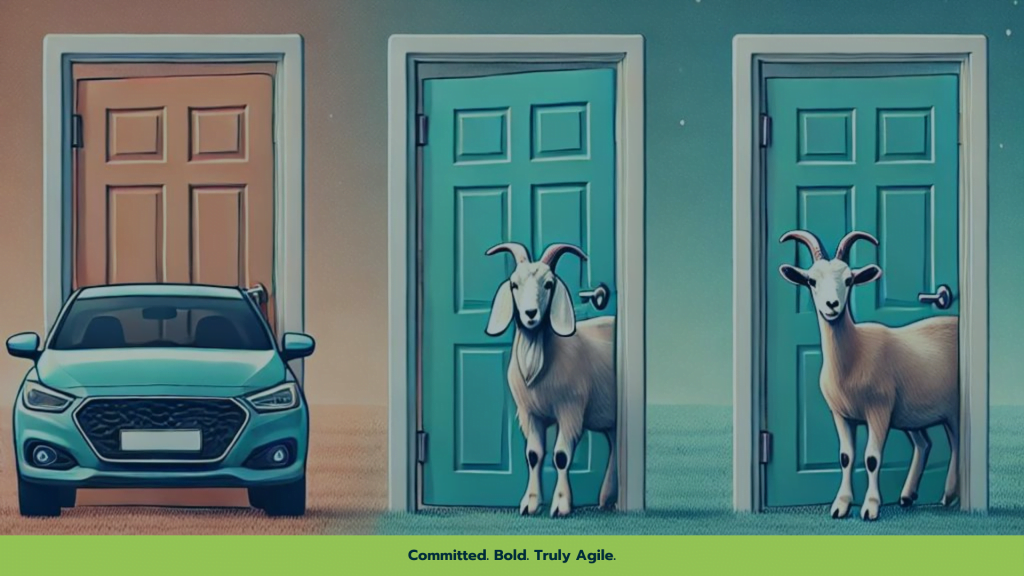Let’s play a game! Imagine this scenario: You’re a contestant on a classic game show. Monty Hall, the host, presents you with three doors. Behind one door is a brand-new car, and behind the other two are goats.
You pick Door #1. Monty, who knows what’s behind all the doors, opens Door #2 to reveal a goat. Now, he gives you a choice: stick with Door #1 or switch to Door #3.
What would you do? (Think about it before you proceed)
Why Switching Works: When you made your initial choice, you had a 1 in 3 chance (33%) of picking the car and a 2 in 3 chance (66%) of picking a goat.
When Monty opens the door to reveal a goat, those odds don’t change for your initial pick. However, if you switch, you effectively get the combined probability of the two doors you didn’t initially pick.
This means switching gives you a 66% chance of winning the car while sticking with your original choice leaves you with only a 33% chance.
And how does this relate to Agile, you might ask?
Now, imagine you’re not on a game show, but in the world of product development. Your initial choice is like launching something new to your customers. You pick Door #1, feeling optimistic about your strategy and product.
You launch your product, confident in its success. This is your initial bet, just like picking Door #1.
Monty (representing the market) opens Door #2, revealing a goat. Let’s say the goat is user feedback or a competitor’s new feature. The landscape has shifted, and you have new information.
Monty gives you a choice: stick with your initial product strategy or pivot based on the new data. In Agile, we know that adapting to change is key. Statistically, switching your approach (like switching doors) improves your chances of success.
You decide to pivot, just like switching to Door #3. By responding to user feedback and competitor moves, you open Door #3 and find the car! Your product now aligns perfectly with user needs and stands out in the competitive market.
Sounds pretty intuitive, right? Well, maybe in theory. In practice, many companies tend to stick to their initial plan like a toddler hanging onto their favorite toy. That’s why simple examples like this can at least push us to think about changing the mindset, which is an essential part of adopting Agile and its principles.
The Monty Hall problem beautifully illustrates some of those:
- Inspect & Adapt: Continuously gather and act on feedback.
- Respond to Change: Stay flexible and ready to pivot.
- Data-Driven Decisions: Use insights and market analysis to guide your strategy.
*The Monty Hall problem is a paradoxical mathematical puzzle often used to explain the concept of probability. It is named after Monty Hall, the host of the American game show “Let’s Make a Deal.” Essentially, a player chooses one of three doors, behind one of which is a car, while the other two conceal goats. After the player selects a door, Monty opens one of the remaining doors to reveal a goat and then offers the player the chance to switch their choice.


